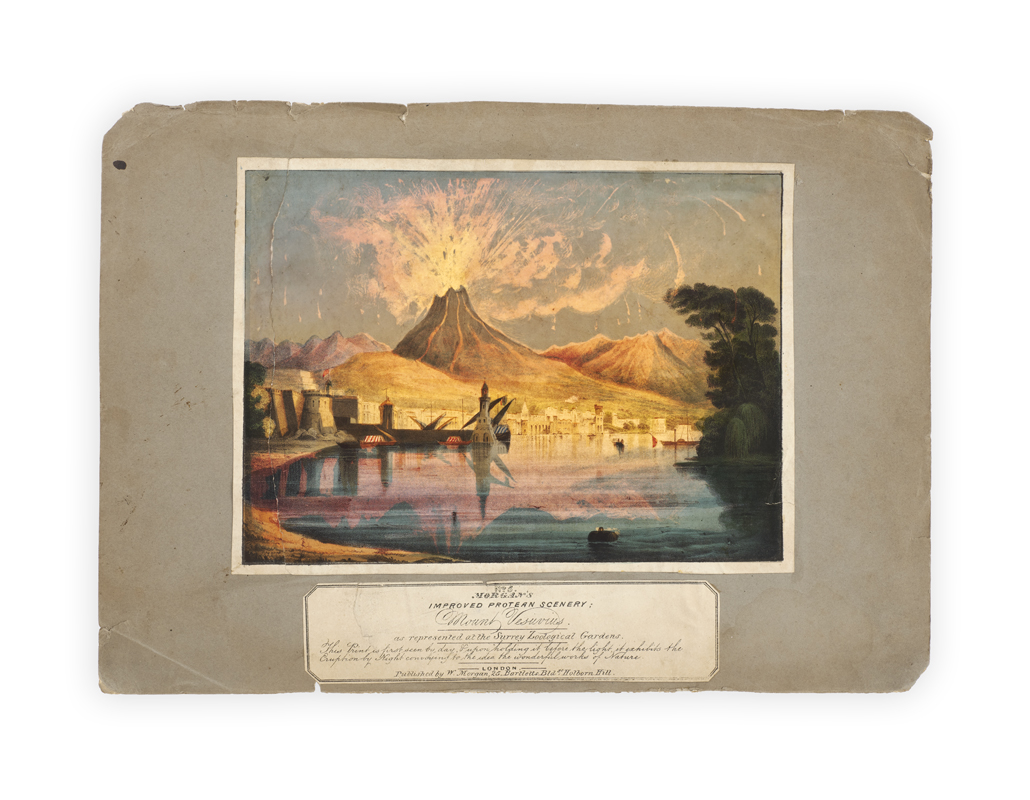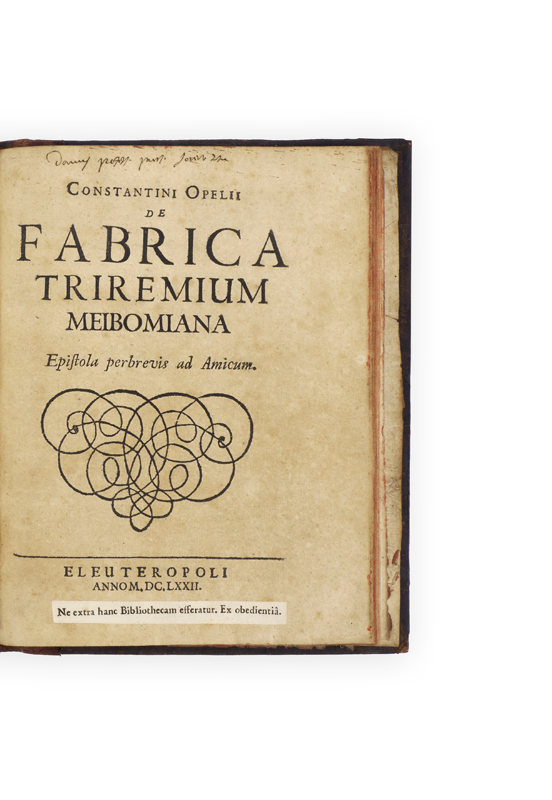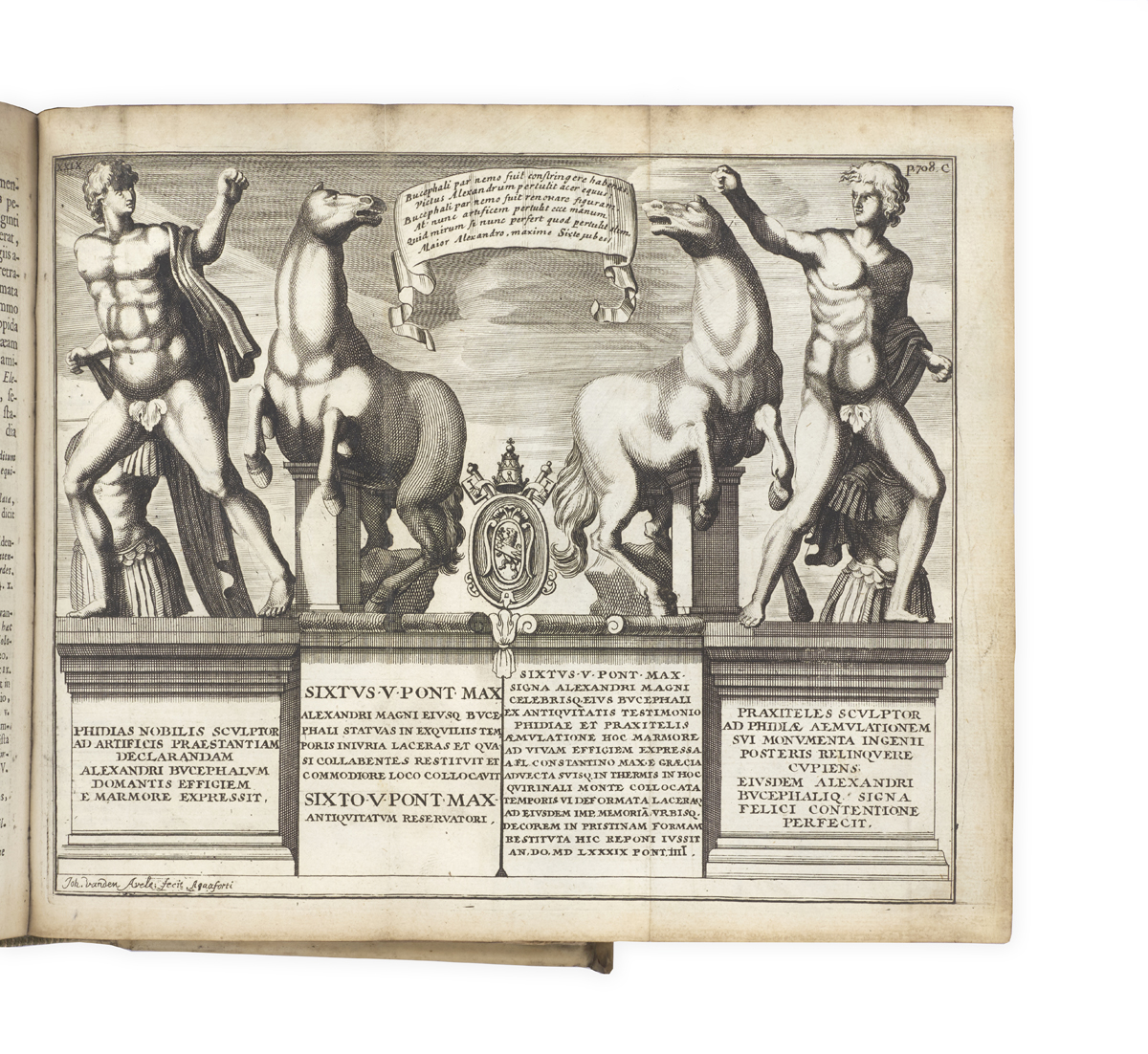
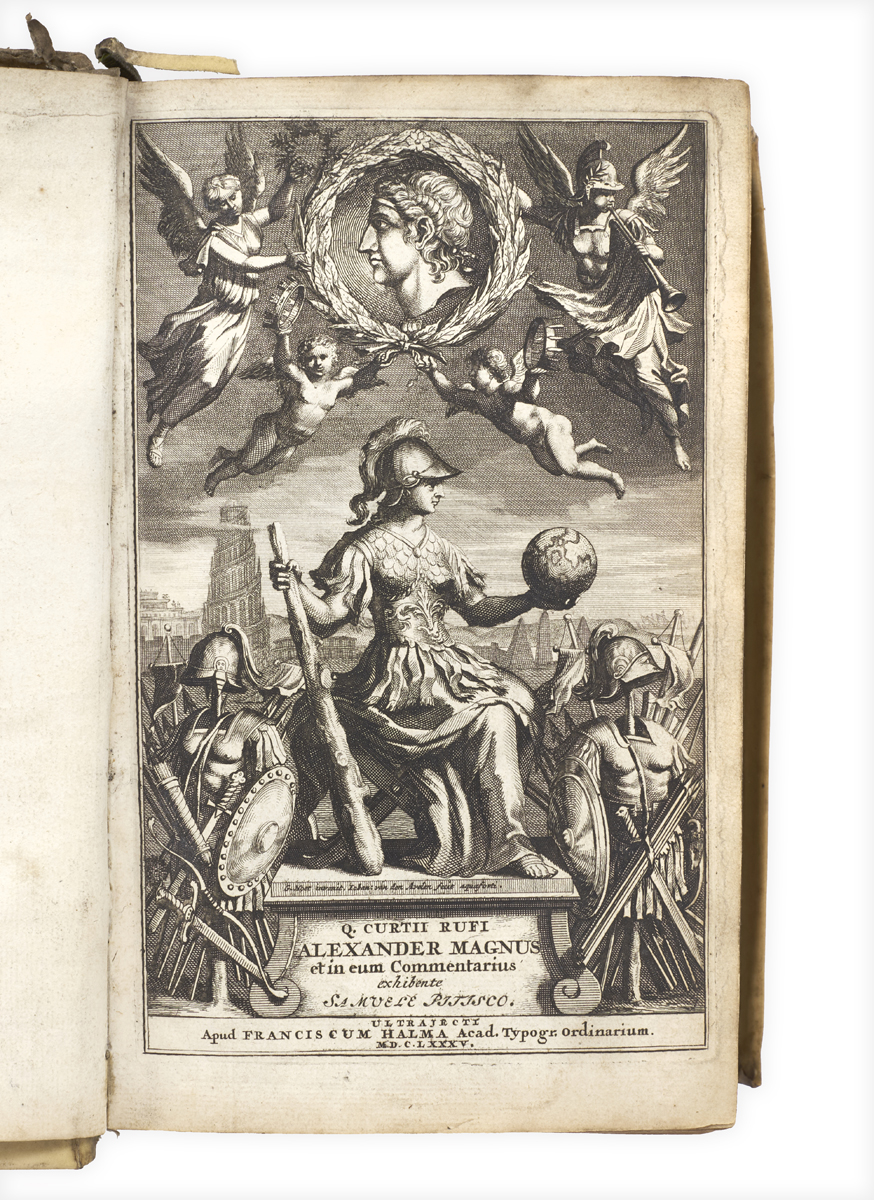
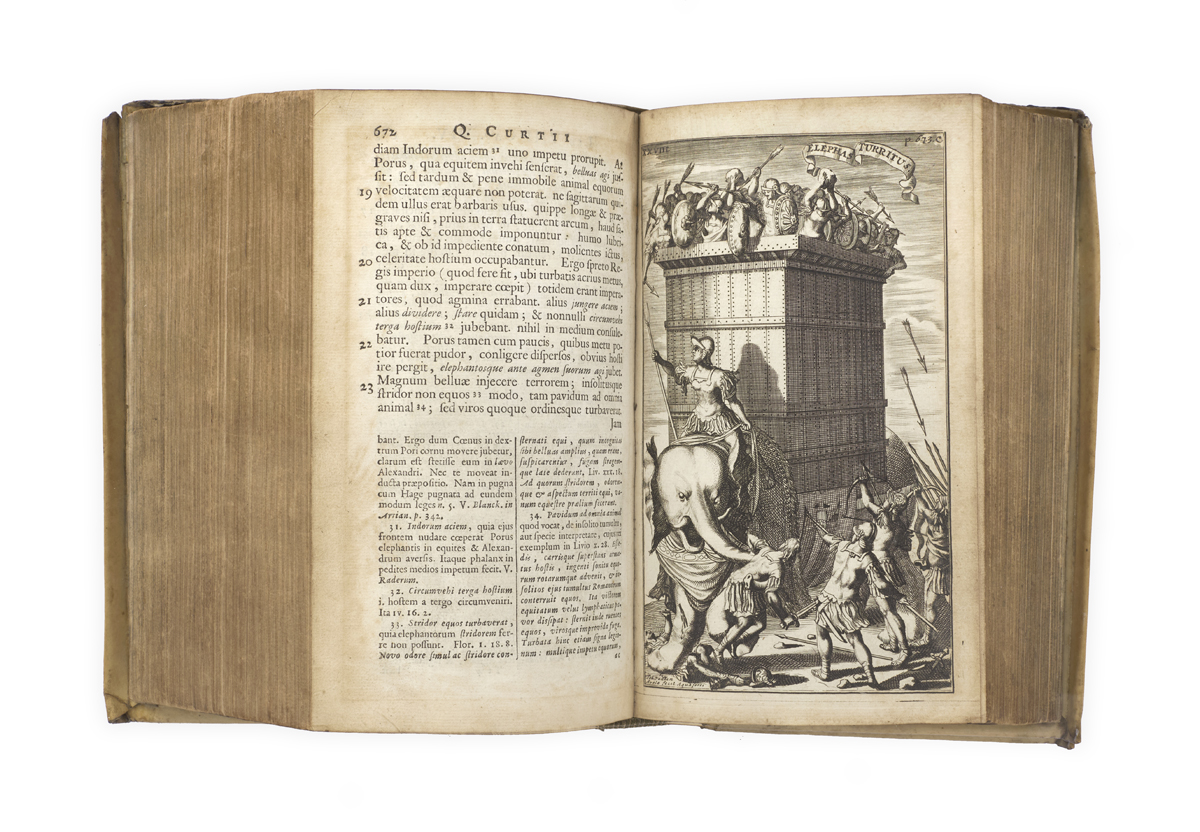
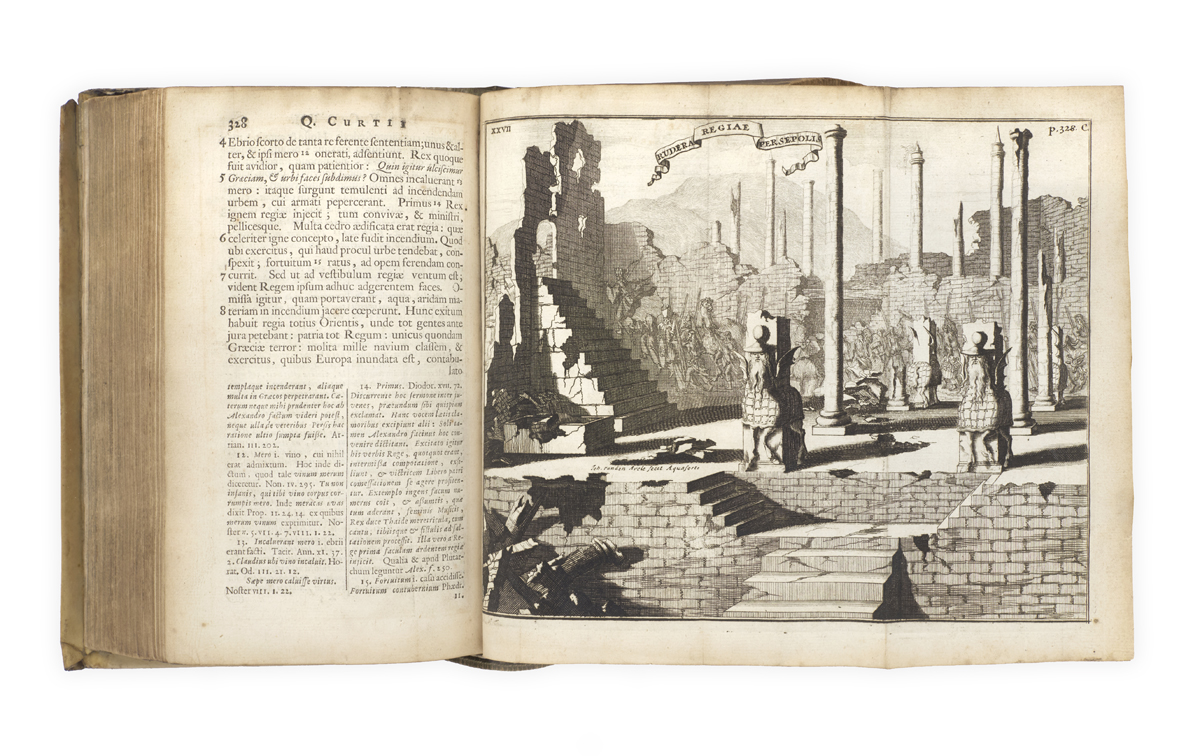
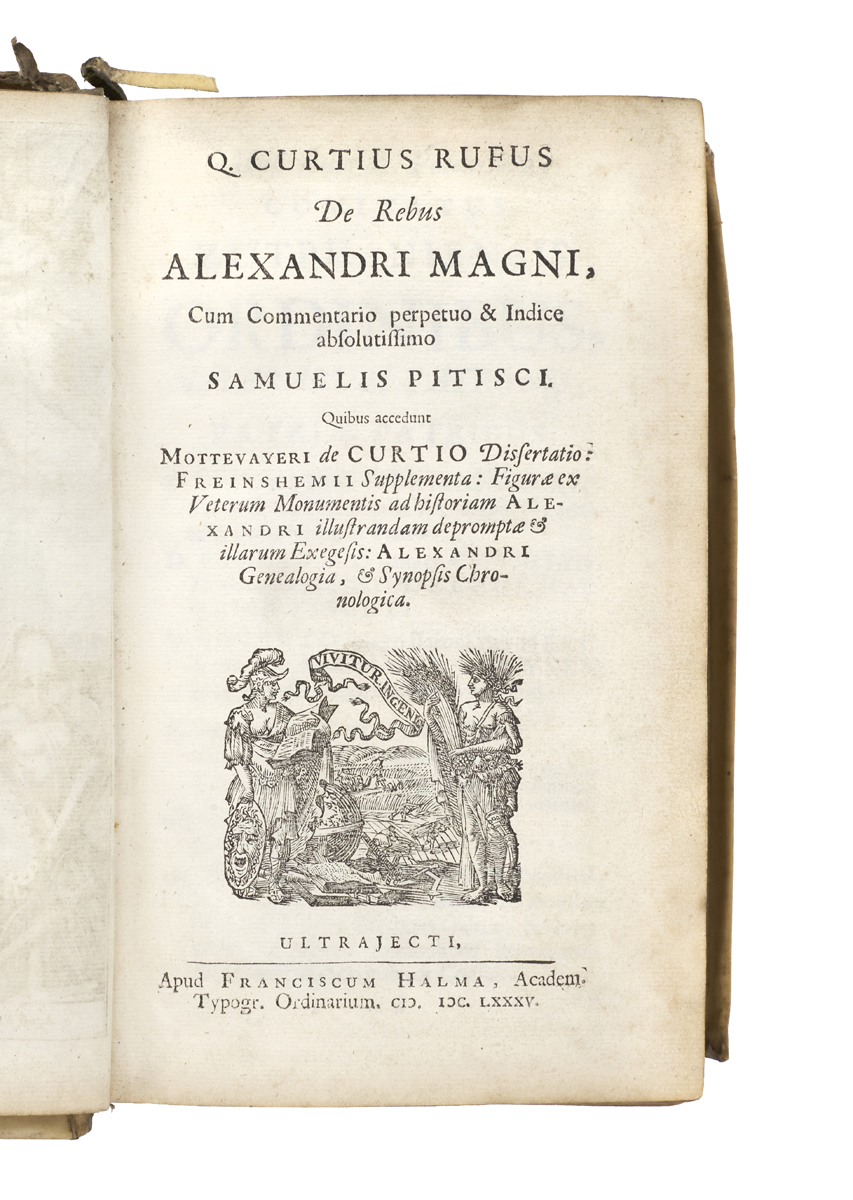
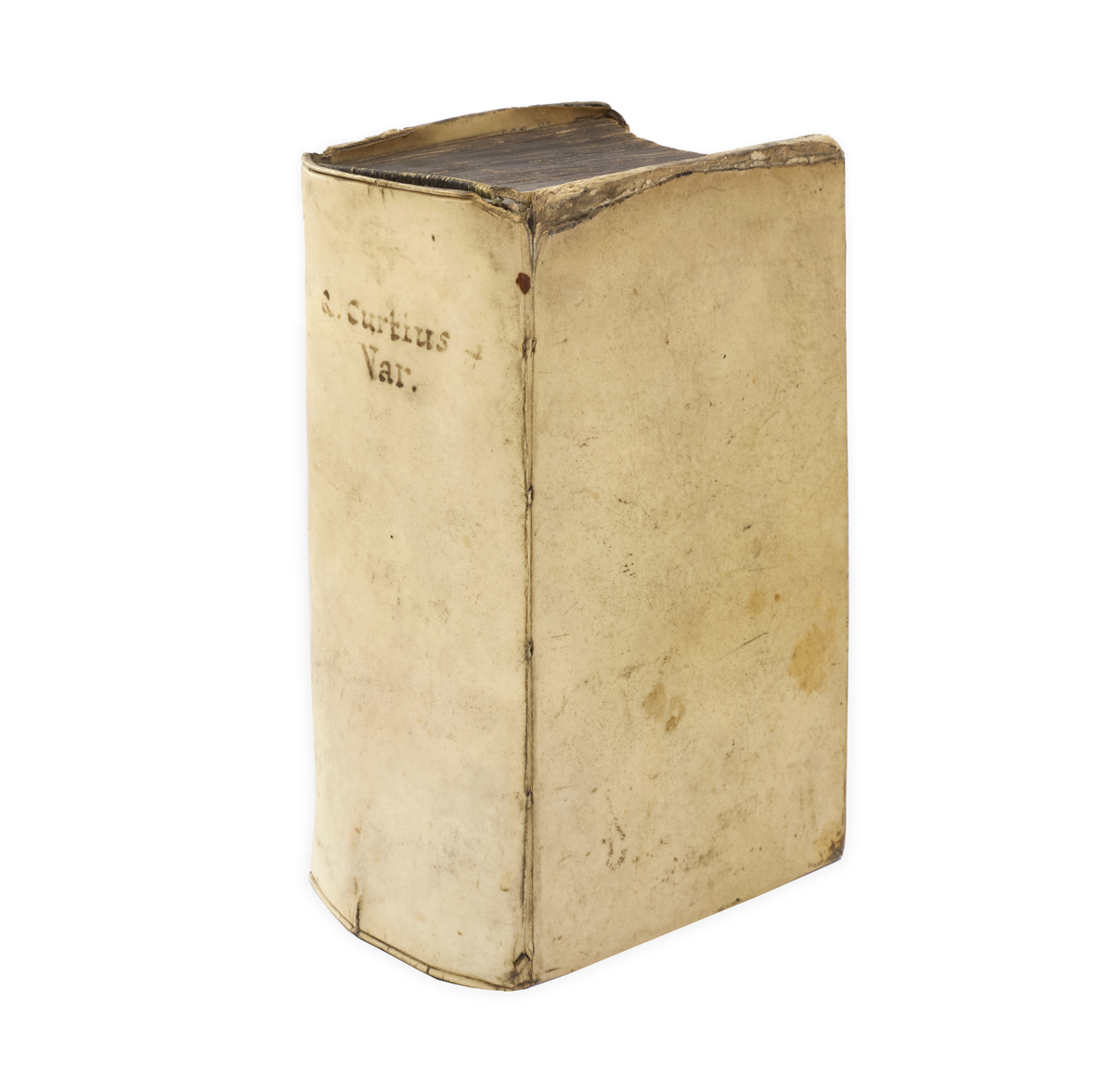
ALEXANDER ILLUSTRATED
CURTIUS Rufus, Quintus.
De rebus Alexandri Magni, cum commentario perpetuo & indice absolutissimo Samuelis Pitisci, quibus accedunt Mottevayeri de Curtio dissertatio, Freinshemii supplementa, figurae ex veterum monumentis ad historiam Alexandri illustrandam depromptae & illarum exegesis, Alexandri genealogia, & synopsis chronologica.
Utrecht, Franciscus Halma, 1685.
8vo, pp. [46], 94, [2], 224, ‘223-654’, ‘665-847’ [i.e. 839], [257], with folding map and 12 etched plates by Jan van den Aveelen (several with multiple figures, numbered to XXIX), of which 6 folding; etched title printed to *1, woodcut device (‘Vivitur ingenio’) to title, woodcut initials and ornaments; a few spots, otherwise a very good copy; in contemporary vellum over boards, yapp fore-edges, later ink lettering to spine, endbands sewn in green and white over folded vellum cores; top-edges of boards worn with minor loss; twentieth-century ink inscription to upper pastedown.

Added to your basket:
De rebus Alexandri Magni, cum commentario perpetuo & indice absolutissimo Samuelis Pitisci, quibus accedunt Mottevayeri de Curtio dissertatio, Freinshemii supplementa, figurae ex veterum monumentis ad historiam Alexandri illustrandam depromptae & illarum exegesis, Alexandri genealogia, & synopsis chronologica.
First Halma edition of Curtius’s history of Alexander the Great, with a series of accomplished etched illustrations by Jan van den Aveelen.
The only surviving Roman biography of Alexander, Curtius’s De rebus is of considerable interest both historical and particularly literary, serving as the principal source for medieval Alexander romances. The eight extant books (the first two being lost) open with the march through Phrygia and the cutting of the Gordian knot; the author is an excellent story-teller, making the most of the many thrilling and picturesque incidents in Alexander’s Asiatic expedition.
The narrative is here complemented by a series of etchings by the Dutch artist Jan van den Aveelen (c. 1650–1727), showing battle scenes (one with a war-elephant) and hunts, portraits, coins and statues, maps, machinery, and attractive topographical views, including the ruins of the palace at Persepolis and views of Babylon and its famed hanging gardens, with lively miniature scenes in the foreground.
STCN 833555308.
